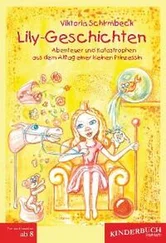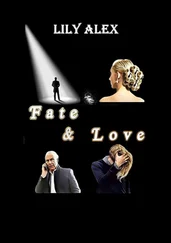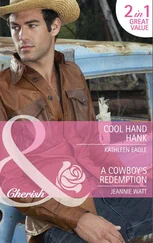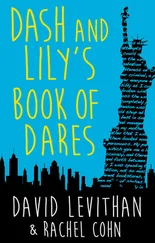Lily Hoang - Unfinished - stories finished by Lily Hoang
Здесь есть возможность читать онлайн «Lily Hoang - Unfinished - stories finished by Lily Hoang» весь текст электронной книги совершенно бесплатно (целиком полную версию без сокращений). В некоторых случаях можно слушать аудио, скачать через торрент в формате fb2 и присутствует краткое содержание. Издательство: Jaded Ibis Press, Жанр: Современная проза, на английском языке. Описание произведения, (предисловие) а так же отзывы посетителей доступны на портале библиотеки ЛибКат.
- Название:Unfinished: stories finished by Lily Hoang
- Автор:
- Издательство:Jaded Ibis Press
- Жанр:
- Год:неизвестен
- ISBN:нет данных
- Рейтинг книги:5 / 5. Голосов: 1
-
Избранное:Добавить в избранное
- Отзывы:
-
Ваша оценка:
- 100
- 1
- 2
- 3
- 4
- 5
Unfinished: stories finished by Lily Hoang: краткое содержание, описание и аннотация
Предлагаем к чтению аннотацию, описание, краткое содержание или предисловие (зависит от того, что написал сам автор книги «Unfinished: stories finished by Lily Hoang»). Если вы не нашли необходимую информацию о книге — напишите в комментариях, мы постараемся отыскать её.
Unfinished: stories finished by Lily Hoang — читать онлайн бесплатно полную книгу (весь текст) целиком
Ниже представлен текст книги, разбитый по страницам. Система сохранения места последней прочитанной страницы, позволяет с удобством читать онлайн бесплатно книгу «Unfinished: stories finished by Lily Hoang», без необходимости каждый раз заново искать на чём Вы остановились. Поставьте закладку, и сможете в любой момент перейти на страницу, на которой закончили чтение.
Интервал:
Закладка:
2. The Wibble-Wibble has aggressive pubic hair, black to the point of anger (i.e. it curls with defiance).
3. When angered, the Wibble-Wibble is likely to take one of two courses of action (never both): a. It may squawk with such violence that it harms itself; or b. it will go for the eyes.
4. The Wibble-Wibble leaves no marks when it walks, although the creature itself can be quite large in volume.
5. The Wibble-Wibble often hides food under its tongue: peckable little treats, breadcrumbs and such.
6. For purposes of procreation, the Wibble-Wibble will mate in only one of three positions: a. horizontally; b. hanging upside-down; or c. in a position of authority.
7. For non-purposes of procreation, the Wibble-Wibble has been known to become rather creative.
8. The Wibble-Wibble prefers mates with the tendency to exaggerate.
9. The Wibble-Wibble enjoys succulent fruits and vegetables, although they cannot be lured out of hiding using these foods as bait.
Shape
Because the Wibble-Wibble’s natural camouflage allows it to blend into its surroundings, it is important for the enterprising, young Birder to focus more on shape than color. The Wibble-Wibble is unnaturally bent. It has rounded shoulders — something akin to an old hunchback — and crooked, knobby fingers. When shirtless, its ribs protrude like little flags. Its legs dip unpleasantly.
The Wibble-Wibble’s posture seems to indicate that it would prefer to be smaller.
( ED: A unique form of compression allows the St. Daniel to seem and not seem. As if a magician’s prop.)
Diet
The Wibble-Wibble is a natural vegetarian, but it will eat fish if forced.
Female Wibble-Wibble are particularly fond dried fruit.
Pregnant Wibble-Wibble will subsist on dark, leafy greens and peanut butter.
Male Wibble-Wibble like crunch.
Young Wibble-Wibble eat only seeds and molding fruits and vegetables.
Old Wibble-Wibble prefer smoothies.
How to Approach the Wibble-Wibble
Quietly, at first. The Wibble-Wibble has a special dislike for the tiny voices of young women and the falsetto of pre-adolescent boys. It is advised that any group of Birders tape — or otherwise bind — the mouths of any member who has one of these unfortunate qualities. Or, before you leave, puncture their bodies in some way, as the tinge of pain in young women’s and pre-adolescent boys’ voices can outweigh the nasality otherwise found.
The Wibble-Wibble is known to find this sound of pain in these two particular types of Birders pleasant.
Once you are quite certain you have sighted a Wibble-Wibble, you should approach while banging a pot with a wooden spoon in a variantly syncopated pattern. The Wibble-Wibble will dance, allowing you to venture closer.
( ED: The Splotched Ruth may also dance like the Wibble-Wibble when approached this way, but if you come within a thirty-foot diameter of it, it will attack. This is when method is particularly important.
There are no known survivors of a Splotched Ruth wound.)
Do not attempt to touch the Wibble-Wibble. The pattern of the Birder’s hand can sear the Wibble- Wibble’s feathers.
Some textbooks argue the Wibble-Wibble has evolved to survive the Birder’s touch, but those textbooks are not to be trusted.
Nests
The Wibble-Wibble make wet nests. They put their beaks into the salvage of the riverside, slime and silt. Their spit, partially digested, has a hardening enzyme to create a substance as porous and hearty as concrete.
On particularly warm days, they fill their bellies with river water (or the drippings from a garden hose) and urinate it back out to prevent their nests from drying out.
Their nests are roughly 2’x2’x2’. They use the flattened end of their wing to make straight walls, but these walls are never actually seen because the nest itself is often filled to its brim with used urine, bits of fur, and half-digested sticks.
The Wibble-Wibble will stash their eggs in this swamp during its incubation period. Unfortunately, when these eggs hatch, many the Wibble-Wibblets drown before their muted, struggled breath is heard.
It has been argued that this initial drowning stage has sped up the Wibble-Wibble’s evolution. I, however, do not believe this mumbo-jumbo.
Trapping the Wibble-Wibble
This is not recommended, especially to young Birders such as yourselves. It is not easy to handle a trapped Wibble-Wibble, and you should definitely not attempt this on your own, or as mentioned earlier, with any young women or pre-adolescent boys as they will surely foul your plans.
But if you find yourself fully prepared for the challenge, know that the Wibble-Wibble is easily wooed. This is perhaps because they find it difficult to wash their interest from this taste palate.
They like wide gestures.
Big displays.
They find themselves transfixed by fireworks displays, but only if there is absolutely no sound attached to it. Also, the fireworks should balloon outward in non-primary colors for optimal results. Any sound whatsoever will distract the Wibble-Wibble’s interest, and she will likely leave in anger. Most importantly: enthusiasm, even if you have to fake it.
Once wooed, the Wibble-Wibble will follow you without question.
The Wibble-Wibble is very loyal to its friends.
Habitat
The Wibble-Wibble is migratory, but they prefer hot, suburban landscapes.
They build their nests around artificial lakes and landscapes. It is hard to estimate where the Wibble-Wibble originates or how it came to find its home in suburbia.
They have also been found at rivers, waterfalls, and concrete fountains.
The Wibble-Wibble will migrate when the average temperature falls below 80 or above 120 degrees Fahrenheit.
Often, however, if the Wibble-Wibble likes the landscape it has found, it may follow a Birder home and build a nest in their bathtub, but only if it is free-standing, with a spout directly overhead. That way, the Wibble-Wibble will not need to migrate with fluctuating temperatures.
The Wibble-Wibble’s Call
The Wibble-Wibble make fast sharp notes: a staccato of piercing dots. This makes it easily translatable into Braille or a conductor’s score. The first call I heard while making my way through that suburban jungle of rural Texas could be transcribed as:

This could be translated a number of ways, but Birder does not account for most of the Wibble-Wibble’s nouns and adjectives, nor does it allow for various explosions of enthusiasm necessary to accurately portray what the Wibble-Wibble attempts to convey.
Instead, it is highly recommended that any Birder interested in the Wibble-Wibble to enroll in a Wibble-Wibble language course before attempting to search for this elusive animal.
Forests
The Wibble-Wibble are social creatures and travel in forests; however, when they have found a permanent home, they more likely to socialize with other creatures over fellow Wibble-Wibble.
Groups of Wibble-Wibble are called forests because when more than one Wibble-Wibble is seen, their camouflage creates a mirage of a forest. They are impossible to distinguish, unless the young Birder knows his or her geography to perfection.
Seeing a Wibble-Wibble
If a young Birder is fortunate enough to catch sight of a Wibble-Wibble, he or she should not flee or be silent. Instead, jump up and down while flailing arms in an ovular pattern. This will interest the Wibble-Wibble to approach.
Читать дальшеИнтервал:
Закладка:
Похожие книги на «Unfinished: stories finished by Lily Hoang»
Представляем Вашему вниманию похожие книги на «Unfinished: stories finished by Lily Hoang» списком для выбора. Мы отобрали схожую по названию и смыслу литературу в надежде предоставить читателям больше вариантов отыскать новые, интересные, ещё непрочитанные произведения.
Обсуждение, отзывы о книге «Unfinished: stories finished by Lily Hoang» и просто собственные мнения читателей. Оставьте ваши комментарии, напишите, что Вы думаете о произведении, его смысле или главных героях. Укажите что конкретно понравилось, а что нет, и почему Вы так считаете.
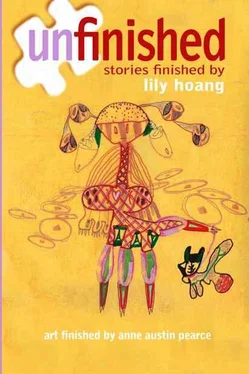





![О Генри - Неоконченный рассказ [An Unfinished Story]](/books/415443/o-genri-neokonchennyj-rasskaz-an-unfinished-story-thumb.webp)
